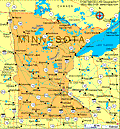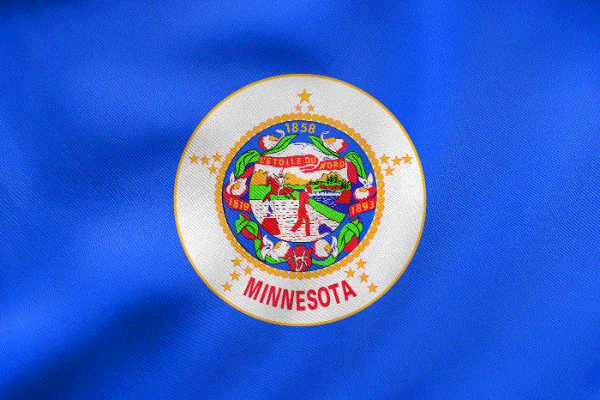 History Following the visits of several French explorers, fur traders, and missionaries, including Jacques Marquette, Louis Joliet, and Robert Cavelier, Sieur de la Salle, the region was claimed for Louis XIV by Daniel Greysolon, Sieur Duluth, in 1679. The U.S. acquired eastern Minnesota from Great Britain after the Revolutionary War and 20 years later bought the western part from France in the Louisiana Purchase of 1803. Much of the region was explored by U.S. Army lieutenant Zebulon M. Pike before the northern strip of Minnesota bordering Canada was ceded by Britain in 1818. The state is rich in natural resources. A few square miles of land in the north in the Mesabi, Cuyuna, and Vermilion ranges produce more than 75% of the nation's iron ore. The state's farms rank high in yields of corn, wheat, rye, alfalfa, and sugar beets. Other leading farm products include butter, eggs, milk, potatoes, green peas, barley, soybeans, oats, and livestock. Minnesota's factories produce nonelectrical machinery, fabricated metals, flour-mill products, plastics, electronic computers, scientific instruments, and processed foods. The state is also a leader in the printing and paper-products industries. Minneapolis is the trade center of the Midwest, and the headquarters of the world's largest super-computer and grain distributor. St. Paul is the nation's biggest publisher of calendars and law books. These "twin cities" are the nation's third-largest trucking center. Duluth has the nation's largest inland harbor and now handles a significant amount of foreign trade. Rochester is home to the Mayo Clinic, a world-famous medical center. Tourism is a major revenue producer in Minnesota, with arts, fishing, hunting, water sports, and winter sports bringing in millions of visitors each year. Among the most popular attractions are the St. Paul Winter Carnival; the Tyrone Guthrie Theatre, the Institute of Arts, Walker Art Center, and Minnehaha Park, in Minneapolis; Boundary Waters Canoe Area; Voyageurs National Park; North Shore Drive; the Minnesota Zoological Gardens; and the state's more than 10,000 lakes. |
Read this profile of Minnesota to learn about the state's history, points of interest, and government. Also find interesting facts about each state, including the state's motto, symbols, and when it entered the union.




